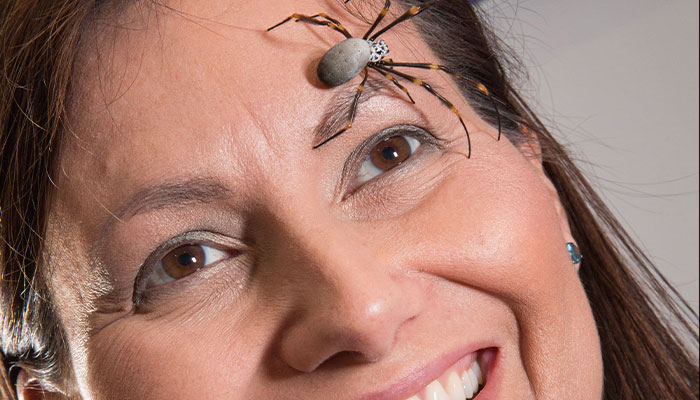About 12 per cent of people may meet the diagnostic criteria for a phobia at some time during their lives. Many more people may be very frightened of something, but the fear may not be severe enough to be classified as a psychological disorder.

A phobia is characterised by an unreasonable or excessive fear of specific objects or situations. To meet the diagnostic criteria for a phobia, a person must actively avoid these objects or situations and the fear and/or avoidance must have a significant negative impact on their life.
Phobia or fear?
Fear is normal and protective. It helps keep us out of danger, such as falling off a clifftop. However, some people experience unhelpful fear. They might experience more fear than a situation requires, or they might feel fear more often than is warranted.
We can learn to fear objects and situations that are not really dangerous, such as clowns. We might also generalise a protective fear, such as fear of redback spiders, to non-dangerous spiders, such as daddy longlegs.
The Diagnostic and Statistical Manual of Mental Disorders (DSM-5) has five phobia categories: animal phobias (for example, spiders, snakes, dogs), natural environment (heights, storms, hurricanes), blood/injection/injury (needles, medical procedures), and situational (planes, elevators, enclosed spaces).

Hold on tight: Fear of flying belongs in the situational category of phobias.
Everything else falls into the 'other' category, such as a fear of vomiting or loud noises. Animal phobias seem to be the most common.
Being exposed to a phobic object or situation usually results in anxiety or panic, which may prompt a person to either run away or freeze. But with phobias relating to blood, injury or injections, people often faint due to a sudden increase and then drop in blood pressure.
A phobia is a treatable condition, and it doesn't need to control your life.
Excessive fear of an object or situation is not necessarily indicative of a phobia. To diagnose a phobia, clinicians need to understand why a person fears the object or situation and what else, if anything, they fear.
Other issues, like panic disorder or obsessive-compulsive disorder (OCD), might better fit a person's symptoms. Regardless of the specific diagnosis, all anxiety and fear disorders are best understood and treated using cognitive-behavioural therapy.
Where do phobias come from?
Phobias develop through Pavlovian conditioning, which involves learning that a stimulus is associated with a particular outcome.
In Pavlov's famous experiment with dogs, the stimulus was a bell and the outcome was being fed. Pavlov repeatedly paired the bell with food, and later the dogs salivated when the bell was rung without them receiving food.
In the case of phobias, the expectation is that an object or situation will have a negative outcome. We can learn associations like this directly (by being bitten by a spider), indirectly (seeing someone else bitten by a spider), or by being told about it ("spiders will bite you").
How are phobias treated?
The only scientifically supported treatment for phobias is exposure therapy, a form of cognitive-behavioural therapy that involves learning new expectations.

No more fears: Associate Professor Melissa Norberg demonstrates exposure therapy, which involves confronting fears and works quickly.
By confronting the objects or situations the person fears in a risk-free situation, they will learn these cues are safe, and that they can tolerate anxiety and fear. It works for all types of phobias, and it works quickly.
The first step is working out exactly what the person fears will happen in the worst-case scenario (for example, a spider crawls on them).
The second step is developing a 'fear hierarchy' that will help them to gradually confront their worst-case scenario. The third step is to use that fear hierarchy to challenge their unhelpful expectations and learn new ones that help them live life less controlled by fear and avoidance.
A phobia is a treatable condition, and it doesn't need to control your life.
Dr Melissa Norberg is an Associate Professor in Macquarie University's School of Psychological Sciences and the Deputy Director for the Centre for Emotional Health.
To understand how exposure therapy should be conducted to maximise its benefits, watch this online lecture Dr Norberg delivered as part of 'The Science of Us' program, co-sponsored by the State Library of NSW and Inspiring Australia.






